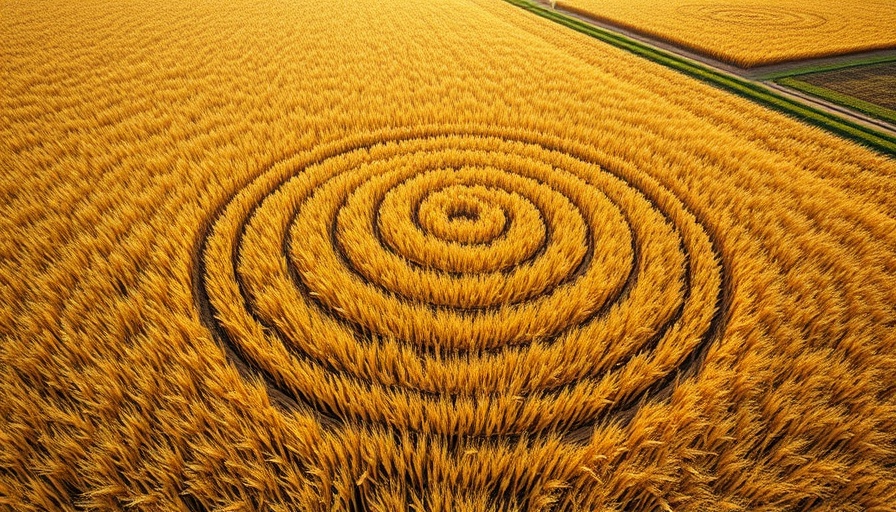
Mysteries Behind Crop Circles Unraveled
Crop circles might look mysterious from above, but their true origins are far more grounded than they seem. Many people view these intricate patterns as evidence of UFO landings or supernatural happenings, especially given the surreal landscapes they create in farming states. However, experts agree that the real reasons behind these formations are often quite mundane and can be traced back to natural phenomena and farming techniques.
The Historical Wave of Fascination
The modern myth of crop circles began in the 1970s in England, where large, puzzling designs appeared overnight in farmers’ fields. This intriguing occurrence sparked widespread curiosity amidst rising UFO interest. While the patterns were often dismissed as hoaxes or pranks, their alluring shapes captivated the public's imagination, giving rise to numerous theories about extraterrestrial involvement.
What Exactly Causes Crop Circles?
Let’s unpack the more practical explanations behind these peculiar formations. A leading cause is agricultural practices, particularly those related to silage. Farmers often cut different areas of a field to prepare feed for livestock, leaving behind geometric shapes as sections of crops are flattened. Moisture plays a significant role in this, as wetter areas are cut differently than those that dry out quicker, resulting in odd patterns.
Tile Lines and Irrigation Systems
Another factor contributing to crop circle formations is the installation of perforated pipes, or tile lines, below the surface. These systems help manage drainage on farmland, ensuring crops receive the right amount of water. When fields are planted using GPS seeders aligned with these systems, they can appear unusual from above. This practice allows farmers to optimize their irrigation but can lead to strange oval or circular shapes when viewed from the sky.
The Role of Weather and Natural Effects
Weather can also cause unexpected designs in our fields. For instance, a lightning strike can devastate a small area, burning down the crops and creating what looks like a purposeful design. Wind, too, can flatten crops in chaotic ways, contributing further to the wild visuals that catch the eye of an aerial observer.
A New Perspective on Crop Circles
As we consider the allure of crop circles, it’s essential to appreciate the intersection of farming technology and nature. Many homeowners and DIY enthusiasts can draw inspiration from these agricultural methods for their personal gardens and yards. From geometric landscaping patterns to strategic watering techniques, there’s much that can be implemented for both functionality and aesthetic appeal. Recognizing these fields’ true origins may also help spark innovative gardening ideas at home, transforming mundane plots into spectacular showcases.
 Add Row
Add Row  Add
Add 




Write A Comment